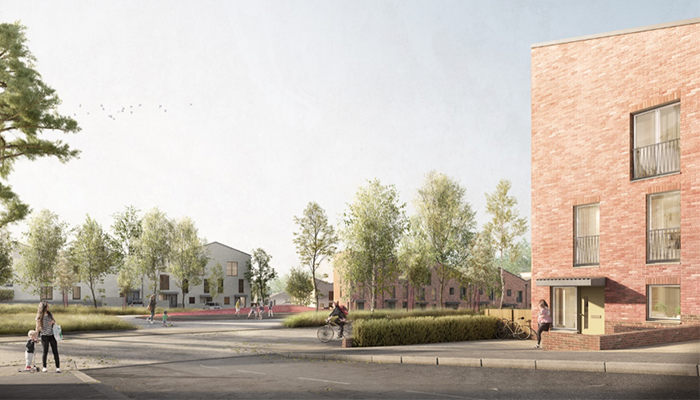Jim MacDonald: Can design help save the planet?
Jim MacDonald, chief executive of Architecture and Design Scotland, explains why a design-based approach is an effective way of getting to people to work collaboratively, which will make a difference both to the quality of our places and the future of our planet.

A development in Inverkeithing, Fife by Kingdom Housing Association and 7N Architects
Architecture & Design Scotland is Scotland’s design champion and we believe passionately in the ability of design to transform people’s lives for the better. We also happen to think that design is a great way of bringing people together to collaborate, for example on the future development of their town or neighbourhood.
I was therefore delighted to take part in a recent discussion, hosted by RTPI Scotland and chaired by Dr Gareth James from the UK Collaborative Centre for Housing Evidence, which explored how planning and related disciplines support the delivery of more and better housing – and in the process, create places which work for everyone while reducing carbon emissions.
Housing has always been a highly politicised issue, never more so than now and the crisis precipitated by the approach of the last few decades demands a response. But this crisis is about more than just houses and whether we’re building enough of them.
It’s also fair to say that we don’t seem to be short of crises. To housing, you can add climate change, knife crime, global population growth, inequality, Brexit – the list is apparently endless. But when it comes to doing something about them, we often struggle to square a circle of conflicting interests and the crisis we are grappling with goes on. Wouldn’t it be good if there were another way, a change that would set us on a better path? Well, maybe there is.
As far as our housing crisis goes, the changes required will be broad, encompassing how we do strategic planning, land assembly, funding and delivery not to mention democracy and decision making. Within this, design is rarely seen as a key factor in addressing the current housing crisis, indeed it is often blamed for causing it. Whether it is the condition of neglected post-war council housing estates or the anywhere/nowhere bleakness of more recent market offerings, how things look is a handy scapegoat to distract from wider problems.
But a design-based approach is a great way to work collaboratively to reconcile disparate interests. This can be to address housing as well as other issues, including most significantly perhaps, the drivers of climate change. Thinking about the implications of multiple development decisions and what these mean for a place helps those involved make better choices – empowering communities and making more effective use of scarce resources in the process.
Architecture & Design Scotland has a strong track record in facilitating this approach and thanks to new funding from the Scottish Government, we are about to embark on work with local authorities and other partners to develop ‘whole-place’ plans for carbon reduction. The funding has arrived on the back of Scottish Government Climate Change Plan’s recognition that planning is the key to carbon reduction. This means planning needs to be less about numbers and more about creating the kind of places which don’t warm the planet.
The work will involve bringing local partners together to create plans for towns, villages or neighbourhoods – existing as well as new – whose objective is reducing carbon emissions. We will use design to understand the range of issues and test how these can be brought together to benefit everyone. This gets done using simple, visual methods that let everyone regardless of their level of expertise see what happens when you move a school, close an office or build a bridge. More significantly, it also helps to highlight opportunities across sectoral boundaries so one user might be able to repurpose another’s redundant building rather than building their own. By thinking and working collaboratively we can make a real difference both to the quality of our places and the future of our planet – and design can help make this happen.
This is part of a series of blog posts reflecting on a recent roundtable discussion co-organised by the UK Collaborative Centre for Housing Evidence (CaCHE) and members of the Scotland Knowledge Exchange Hub, and hosted by RTPI. This article was originally published on the CaCHE website.























